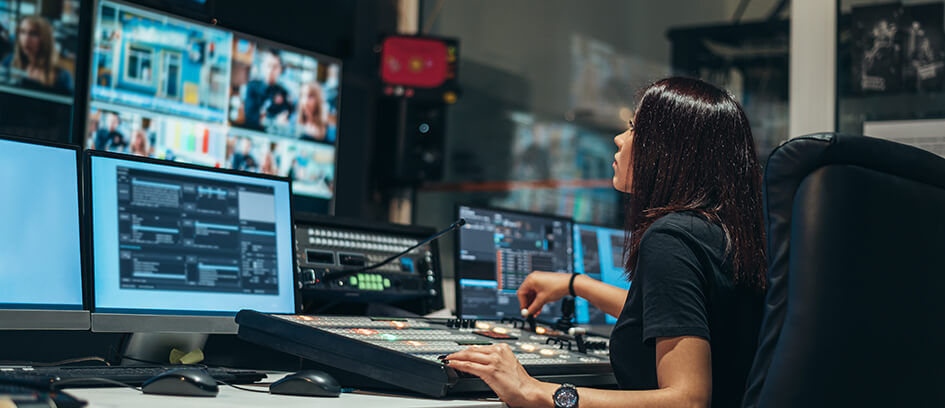Background Actors and Post-Production

As a Central Casting Background Actor, you're probably pretty familiar with the production phase of making movies and TV shows, but what happens between wrapping principal photography and release? A lot of work goes into the post-production process, including some roles for Background Actors.
What happens during post-production
After pre-production (the planning and preparation stage) and production (filming) are wrapped, the post-production teams get to work turning the footage into the finished movie or TV episode. There are a number of departments that work simultaneously and collaborate on different elements to create the final product, including these important steps:
Editing
During the editing process, the film editor assembles the filmed footage in chronological order then works with the director to choose the best take, add transitions, decide what needs to be cut, and determine if additional filming is needed to supplement or improve footage.
Sound editing
Since the main focus during filming is capturing the visuals, much of a film or episode's sound is added in post. Sound editing involves recreating sounds that weren't picked up on set (like the click of a door closing), creating sounds that don't exist naturally (the whoosh of a spaceship), and dialogue replacement (known as ADR).
Sound mixing
When all the sounds have been recorded, they're ready for sound mixing. This process involves adding the sounds to the visuals and blending with the dialogue, music, and effects to create a cohesive sound experience. Think of a scene that takes place at a park. There may be dialogue, cars passing, birds chirping, and kids playing baseball. These sounds exist at the same time and it's the sound mixer's job to layer them together in a way that's realistic.
Visual effects
Most modern film and TV shows utilize visual effects in some form, often in ways that you don't even notice. When you think of computer generated imagery, you're likely thinking of fantasy worlds and sci-fi monsters, but visual effects can be as subtle as falling snow or changing a studio skyline to better match the intended setting. CGI, compositing, and motion capture are types of visual effects that may be used to enhance a production.
The amount of post-production work can vary depending on the type of project, budget, and other factors. For example, a film with heavy visual effects can spend months in post compared to films that need little to no CGI.
Background Actors' role in post-production
While Background Actors do the majority of their work during the production phase, there are some instances when they're needed for post-production. During the editing process, if the director feels they don't have the right footage or decides to change a scene that isn't working, Background Actors can be called for reshoots or to work on additional scenes.
Ambient and crowd noises can also be added during post-production. While filming, Background Actors pantomime conversations so they don't interfere with sound being recorded by the principal actors. During post, walla groups can be hired to record crowd noise and other sounds to blend into the sound mix. Central Casting hires Background Actors for walla groups, including on animated shows like The Simpsons.
Want to learn more about the entertainment industry and how Central Casting Background Actors, Stand-Ins, and doubles help movies and TV shows come to life? Check out our articles What's the Difference Between a Stand-In and Photo Double? and How Production Design Influences Background Work.